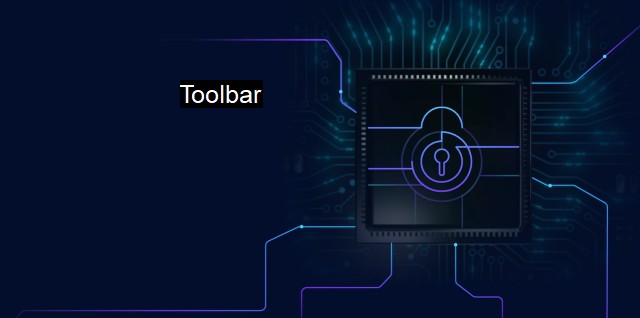What is Toolbar?
The Role of Cybersecurity Toolbars in Securing Your Systems and Data: Define, Explore, Compare and Review Popular Options
The "Toolbar" is an essential tool in the digital realm, especially when it comes to cybersecurity and antivirus software. It is referred to as a string-like element of a user interface, typically placed either at the top or inner part of a window, and contains clickable icons, buttons, or options that trigger certain functions and operations.a toolbar plays an integral role in safely navigating the internet and protecting systems against potential threats. Cybersecurity refers to the practice of safeguarding systems, networks, and programs from digital attacks. These cyber attacks often aim to access, change, or destroy sensitive information, milk money from users, or disrupt normal business processes. On the other hand, antivirus software is a data security utility developed for detecting, preventing, and removing malicious software, or malware.
One way that toolbars contribute to cybersecurity is through quick and easy access to security features. Many antivirus programs come with added toolbars that give users a line of first defense against harmful sites or downloads. For instance, antivirus toolbars often rate sites on how safe they are based on past data, protecting users from threats such as phishing attacks. By simply installing an antivirus plugin on your browser toolbar, you could effectively filter unsafe content and dodge web-based threats.
Additional features in cybersecurity toolbars can include ad blocking and tracker blocking. They are valuable in preventing unwanted and potentially dangerous ads from appearing on pages you visit. They block web trackers that tag along your online activities, decreasing a user's vulnerability to cyber threats. Indeed, some browser toolbars are designed explicitly with built-in malware scanning capabilities, ensuring that no suspicious software slips through while downloading files off the internet.
Not all toolbars augur well for users' safety. In fact, some are infamous for being carriers of malware themselves, especially when they are installed unintentionally. This can occur when a user downloads software from the internet that comes bundled with other unwanted programs. These deceptive programs trick users into installing toolbars that can alter browser settings or monitor user activity without their knowledge. In severe cases, they could also install viruses, hence posing a cyber security threat.
This development undeniably sparked a lot of concerns regarding the seemingly double-faced nature of toolbars. Dubbed as "malicious toolbars" or "potentially unwanted programs (PUPs)," this now becomes a realm where antivirus companies play an even more significant role. Through efficient scanning of incoming software, users can ward off the hefty damage these outliers can cause.
Most modern browsers come with a mechanism to manage, disable, or remove toolbars, allowing users to combat unsolicited intrusions. Nonetheless, many less tech-savvy users may not be aware such options exist or how to use them.
While a toolbar represents a helpful tool that can enhance internet user experience, especially in cybersecurity and antivirus contexts, there is a darker side to these seemingly innocuous strip of icons. a cautious approach combined with the power of reputable antivirus software can indeed keep users safe in their online activities. Just as in real life, vigilance, awareness, and the use of good tools are the key to avoiding potential security pitfalls in the vast digital world. Always remember that the first line of defense is always awareness.

Toolbar FAQs
Can using a toolbar compromise my computer's cybersecurity?
It depends on the toolbar. Some toolbars are designed by cybercriminals to capture your personal information, track your web browsing habits, or even install malware on your computer. Before downloading any toolbar, make sure it is from a reputable and trustworthy source.Do antivirus programs work with toolbars?
Yes, some antivirus programs may work with certain toolbars to provide additional cybersecurity protection. However, not all toolbars are compatible with antivirus software, and some may actually interfere with the performance of your antivirus program. It's important to check compatibility before installing any new toolbars.How can I remove a toolbar if I no longer want it?
To remove a toolbar, you can typically go to your browser's settings or extensions menu and uninstall it from there. If the toolbar is malicious and won't uninstall, you may need to use an antivirus program to remove it completely.Are all toolbars bad for my computer's security?
Not all toolbars are bad, but some can be malicious or potentially harmful to your computer's cybersecurity. Some legitimate toolbars can provide useful features or shortcuts, but it's important to research and evaluate any toolbar before downloading it. Additionally, having too many toolbars can slow down your browser and make it more vulnerable to security threats. It's best to use only the toolbars that you truly need and trust.| | A | | | B | | | C | | | D | | | E | | | F | | | G | | | H | | | I | | | J | | | K | | | L | | | M | |
| | N | | | O | | | P | | | Q | | | R | | | S | | | T | | | U | | | V | | | W | | | X | | | Y | | | Z | |
| | 1 | | | 2 | | | 3 | | | 4 | | | 7 | | | 8 | | |||||||